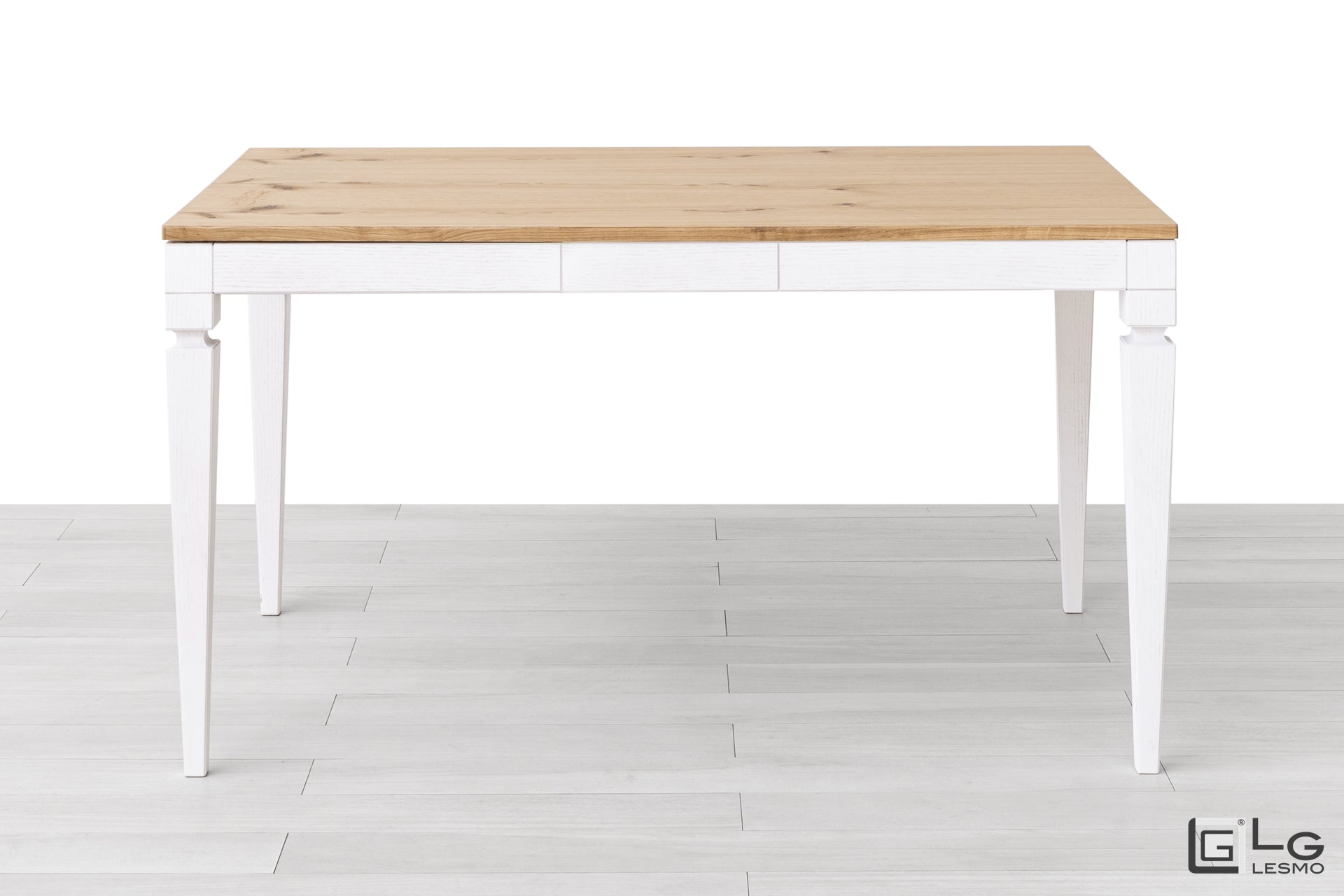"An architect may design a living room that’s darker or near the bedroom, but the presence of both a sofa and a table is essential."
Given that the sofa and table are indispensable in any living room, how can we make the most of them? How should you arrange the sofa and dining table to achieve the desired effect effectively?
Treating the table and sofa as strategic elements, this article explores some furniture arrangements architects use to create elegant, functional spaces by optimizing the placement of these two essential pieces.
Table of Contents
- Coordinated Sofa and Table
- Contrasting Sofa and Table
- An Alternative Layout: The Transformable Table
- Using the Sofa to Divide the Living Room
Coordinated Sofa and Table
The first example shows a coordinated arrangement of the sofa and dining table, emphasizing aesthetics. Each time you design, you face a choice between beauty and functionality, and in this case, the interior designer prioritized aesthetics. The photo showcases a large open-plan living room, decorated with a sense of continuity. Here, the sofa and table subtly define the distinct areas of the living space. Positioned at opposite ends of a TV stand, used as a separation element, the sofa and table match each other and the surrounding style: a simple, elegant space with a soft cream palette. Coordinated living rooms with matching sofa and table convey a sense of harmony and personality, giving the space a balanced, welcoming, natural feel.

Emphasizing Contrasts
When decorating is guided by taste, the possibilities multiply exponentially. For example, when arranging the table and the sofa, as long as there’s adequate spacing, you can choose to furnish with contrasts. This is the case with the living room shown in the image, where the table and sofa are extremely far apart and chromatically contrasting.
The distance between these two pieces is aligned with a tasteful choice, as it helps define two distinct, well-defined areas. On one side, there is the dining table, a kitchen with appliances, and an impressive sideboard; on the other, a large sofa dominates the space, accompanied by poufs, a rug, and some decorative elements, clearly marking the relaxation area.
The separation of these two spaces isn’t just structural: their duality is further emphasized by colors and styles that follow strong contrasting logic. For instance, while the kitchen area is dominated by the darker tones of wood, as seen in the table with wrought-iron legs and a walnut tabletop, the living area is entirely different. Unlike the kitchen, the relaxation zone is free of cabinets and lightened by the overwhelming presence of white, visible in the marble wall and the cream shades of the sofa.

An Alternative Arrangement: The Transformable Table
Choosing how to arrange the sofa and dining table is always a matter of space. It’s no surprise that before diving headfirst into living room design, people consider the available square footage and their social and personal habits. In these cases, it’s essential to ask yourself: Do you prefer a cozy and intimate living room, or one suitable for hosting friends and family?
Not everyone can decide easily when faced with such a question. And it’s also true that our habits can vary and change over time. For those navigating uncertainty or embracing flexibility as a mantra, a transformable table might be the best solution.
The great advantage of transformable tables is their ability to solve the tricky issue of space and arrangement, making it unnecessary to wonder how to position the sofa and dining table. Specifically, the photo shows a coffee table that can be moved (thanks to wheels on its legs) and transformed into a dining table that seats up to 16 people. Thanks to this smart design, the table can be placed wherever it’s most functional and transformed as needed.

Using the Sofa to Divide the Living Room
Sofas and tables can also act as architectural elements to create spaces and “zones” within a large open space. The photo below shows a living room designed with this understanding, where the sofa itself separates the “dining” area from the “relaxation” area.
Placed in the center of the room and aided by an open bookshelf, the sofa clearly defines the two areas of the living space, also serving as a visual and acoustic barrier. This solution is widely adopted in furnishing large open spaces because it creates “niches” of privacy or intimacy, similar to traditional homes, while still being within a single large room.

Placing the Table Near the Sofa
Another arrangement to consider when deciding how to position the sofa and dining table involves placing the two furniture pieces close to each other. This choice is often a necessity in small spaces but can also be a functional solution even in larger rooms.
The advantage here is clear: placing the sofa and table close together helps create “corridors” or predefined pathways. This arrangement forces guests to move along specific paths designed by the homeowner, making hosting and cleaning more manageable.
However, it’s essential not to go overboard with experimentation. Always keep in mind two simple rules:
- It’s recommended to leave at least 50-60 cm (20-24 inches) of free space around the table for easy movement.
- There should always be at least 1 meter (about 3 feet) of distance between the table and the sofa.






























Leave a comment
This site is protected by hCaptcha and the hCaptcha Privacy Policy and Terms of Service apply.